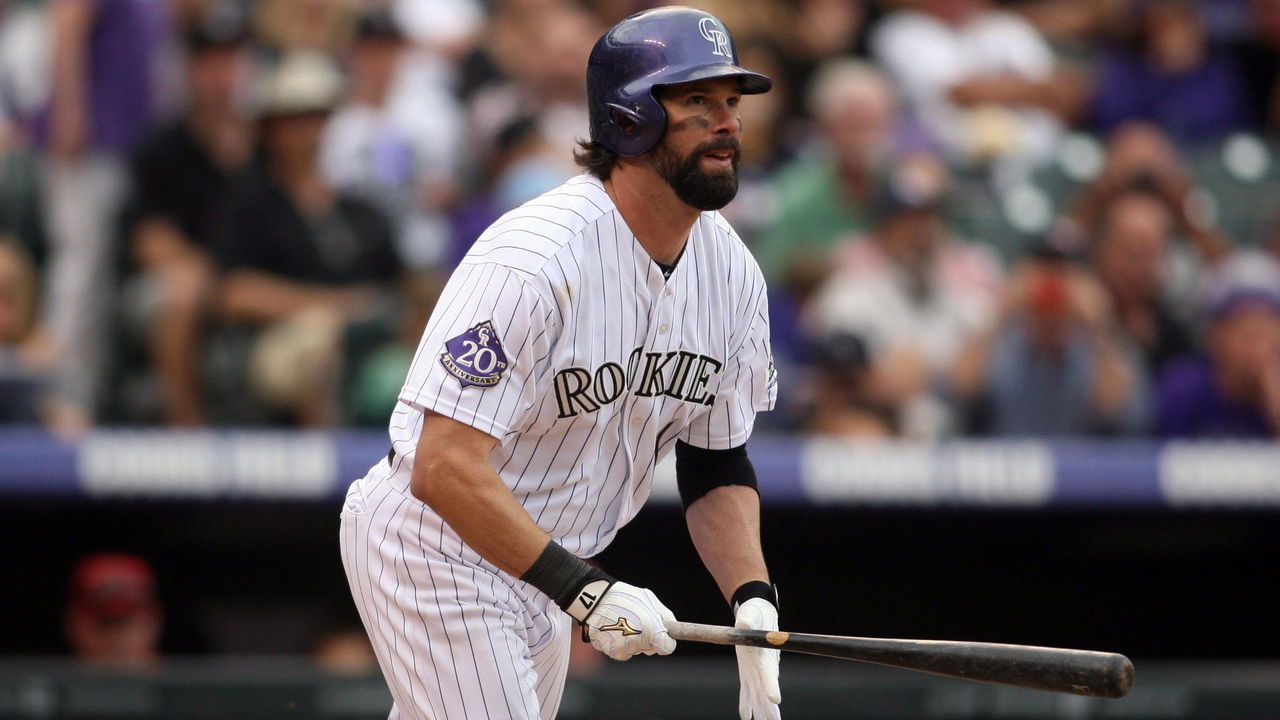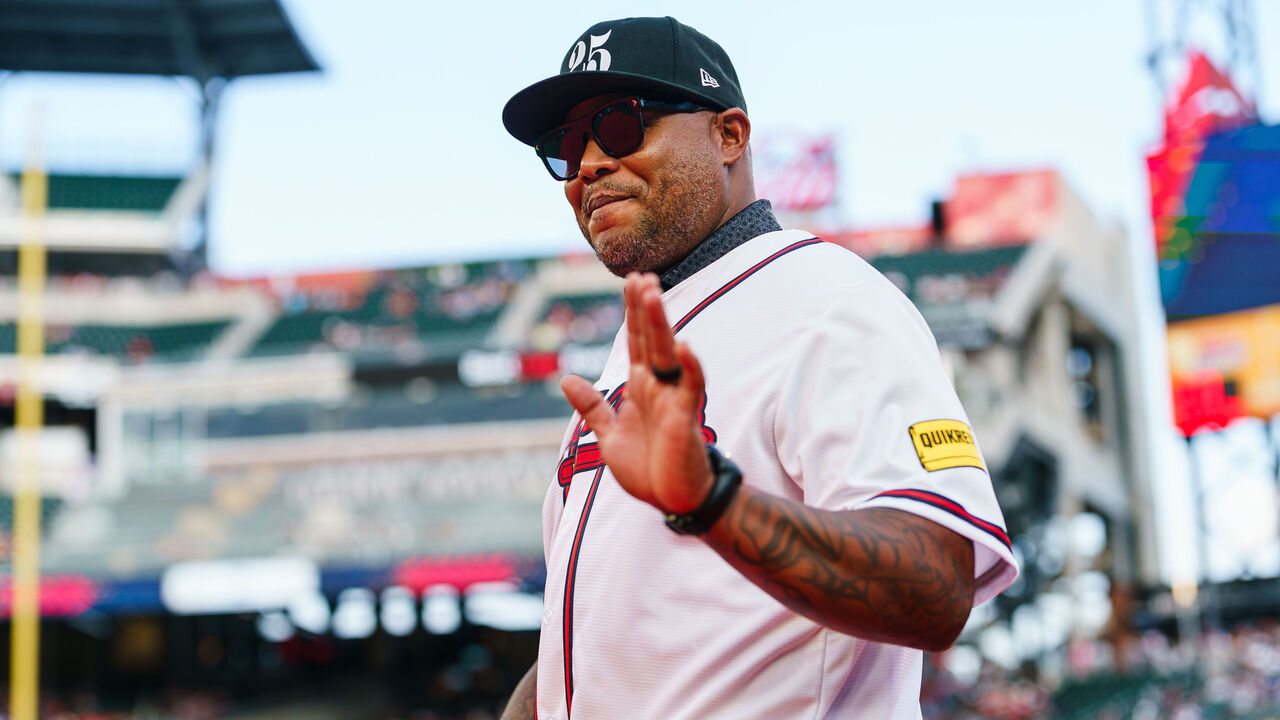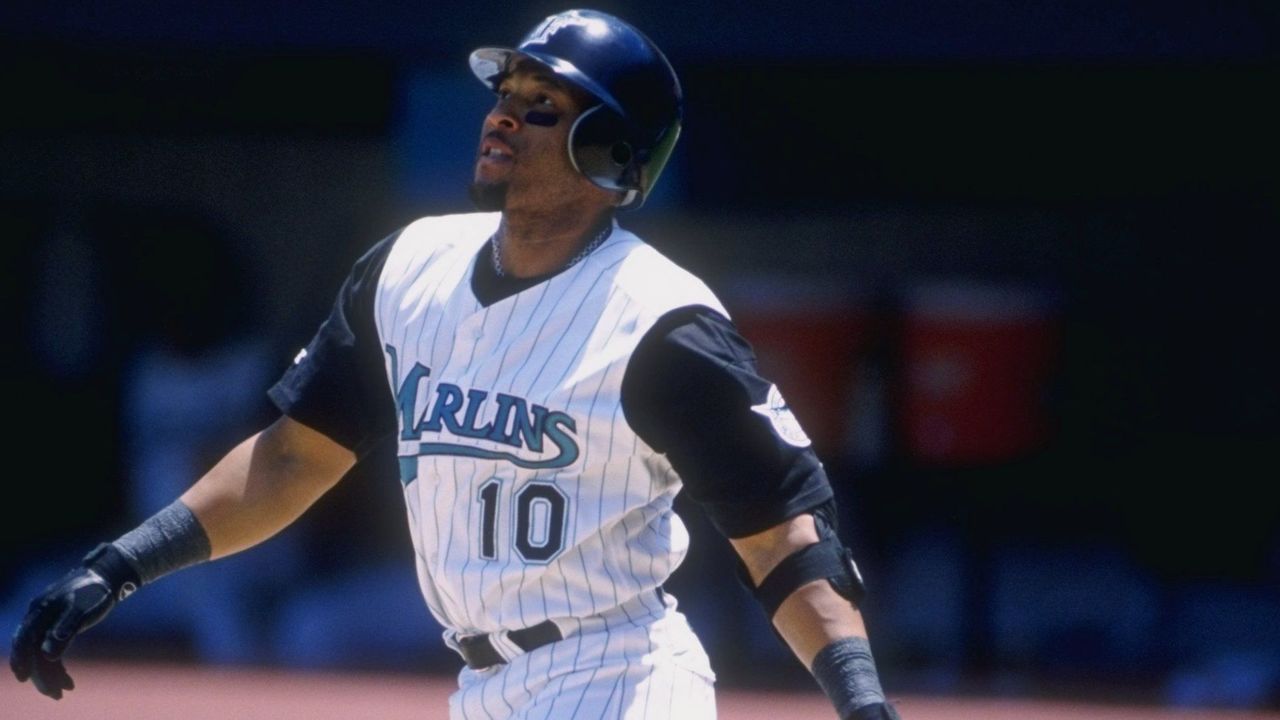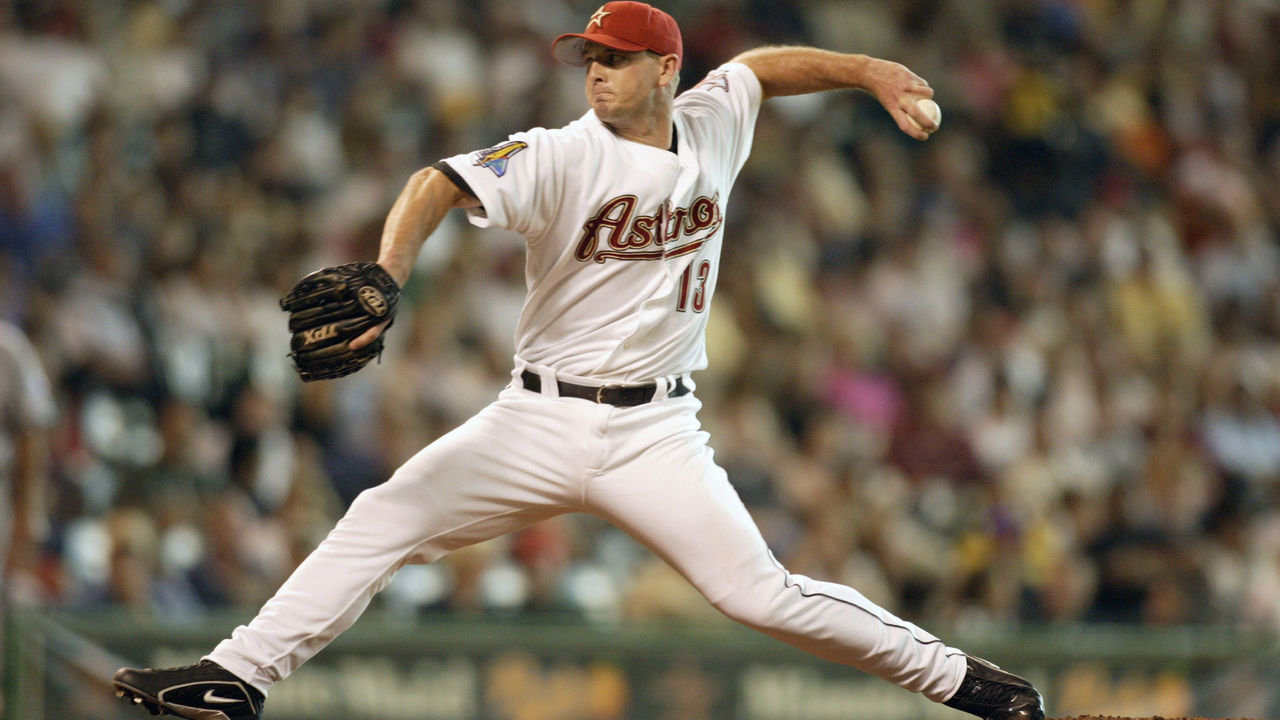2024 Baseball HOF preview: Helton headlines returnees on verge of election
With the Baseball Hall of Fame's class of 2024 announcement approaching, it's time to review this year's ballot. Today, we're looking at the four returning candidates who are closing in on election. One slugger seems ready for his long-awaited moment next week. Who else could make the leap?
Note: All WAR figures from Baseball Reference unless otherwise noted.
Todd Helton

Position: 1B
Teams: Rockies
JAWS: 54.2 (15th at 1B)
WAR: 61.8 (17th)
Year on ballot: 6th (72.2% in 2023)
| GP | BA | OPS | H | HR | RBI |
|---|---|---|---|---|---|
| 2247 | .316 | .953 | 2519 | 369 | 1406 |
At last, voters have woken up to Todd Helton. The Rockies icon absolutely raked at his peak, averaging 35 homers a year during his first seven full campaigns while winning four Silver Sluggers and three Gold Gloves. His best season came in 2000 when he won a slash-line triple crown, flirted with .400 into September, and led the NL in hits, doubles, and RBIs. He's one of only three players with multiple seasons of 100 extra-base hits, alongside Hall of Famers Chuck Klein and Lou Gehrig, and one of 18 hitters with a .300/.400/.500 slash line in at least 7,000 plate appearances.
Yes, Helton spent his entire career playing home games at Coors Field, a factor that was held against him even when he played. But he's no different from any other offensive superstar who padded their numbers in an extremely friendly home environment. Gehrig and Babe Ruth spent decades hitting bombs into Yankee Stadium's short porch that was built specifically to aid Ruth. Philadelphia's Baker Bowl - a long-forgotten bandbox featuring a 280-foot right-field fence - essentially turned Klein into a Hall of Famer. Helton absolutely had the Coors advantage, but he still had to hit the ball, which he did with authority in all 30 ballparks.
Helton was the rare modern power hitter who also consistently hit for average and was difficult to strike out, with just one 100-K season. His on-base skills were elite, as he led the category twice and posted a .400-plus OBP nine times - the same number as Albert Pujols, Jim Thome, and Frank Thomas, among others. Despite slightly lower counting numbers, Helton's above the average HOF first baseman in both JAWS and seven-year peak WAR (46.6) and four points below the average in WAR.
All of this was there for anyone to see long before Larry Walker cracked the Mile High wall that kept Rockies out of Cooperstown. Since Walker's 2020 election, Helton's overall support has increased by over 140%, highlighted by the 20-point surge last year that pushed him to 72.2% - 11 votes shy of election. He's been one of the biggest beneficiaries of the backlog finally clearing up, and it shows in both his tracker numbers (83.2% of public ballots) and last year's massive increase in private support.
The only modern candidates who weren't voted in by writers after crossing the 70% mark were Jim Bunning (eventually elected by the Veterans Committee) and the uniquely polarizing Curt Schilling. Barring the unforeseen, Helton will not join that list. If his phone doesn't ring on Tuesday, something will have gone terribly wrong.
Andruw Jones

Position: CF
Teams: Braves, Dodgers, Rangers, White Sox, Yankees
JAWS: 54.6 (11th at CF)
WAR: 62.7 (14th)
Year on ballot: 7th (58.1% in 2023)
| GP | BA | OPS | H | HR | RBI |
|---|---|---|---|---|---|
| 2196 | .254 | .823 | 1933 | 434 | 1289 |
Jones has a legitimate case as the greatest defensive center fielder ever. He's got the hardware to prove it, with 10 Gold Gloves; only Willie Mays and Roberto Clemente won more in the outfield. The stats back it up, too: Jones' 235 fielding runs, which track defense across all eras, are 50 ahead of second-place Mays in center. And the eye test? Oh, you better believe he passes the eye test.
Jones' defense was so great that it credibly builds his entire Hall of Fame case, even after his rapid decline at age 31 turned him into a part-time player. Without both that sudden drop-off and a move to Japan for his final two seasons, he likely would have reached 2,000 MLB hits - no expansion-era player (since 1961) with fewer than 2,000 hits has been elected by the BBWAA - and maybe even taken a run at 500 homers. He was no slouch offensively during his prime, winning the Hank Aaron Award for his 51-homer season in 2005. But since he's missing the round numbers, defense carries the load, and that's why it's taken so long for voters to see him.
Jones failed to crack 8% in his first two tries before support began to grow. His overall climb can be attributed to the changing electorate, as younger voters - many of whom would have grown up watching Jones - are more likely to be swayed by this kind of nontraditional Hall of Fame case. Last year's thin crop of first-time candidates helped draw more votes his way, but the real catalyst behind his jump above 50% was the support from 66.7% of first-time voters in 2023. That trend has continued this year, where 60% of first-time voters in this year's tracker have checked his name.
Right now, he's sitting at 71.6% in the tracker, and that number could rise as more votes are revealed. That puts Jones on track to eclipse 60% overall, with three years to go. Even with the inevitable hit from the private ballots, he should again be a big winner on election night.
Gary Sheffield

Position: OF/3B
Teams: Brewers, Padres, Marlins, Dodgers, Braves, Yankees, Tigers, Mets
JAWS: 49.3 (24th at RF)
WAR: 60.5 (19th)
Year on ballot: 10th (55% in 2023)
| GP | BA | OPS | H | HR | RBI | SB |
|---|---|---|---|---|---|---|
| 2576 | .292 | .907 | 2689 | 509 | 1676 | 253 |
For a player as supremely talented and intimidating at the plate as Sheffield was, it's taken a long time for his career to start gaining recognition. Unfortunately, it might have happened too late.
Sheffield was a natural hitter with raw power that put him in the 500 home-run club and great contact abilities that won him a batting title. He never struck out more than 83 times in a season and finished top 10 in home runs seven times. His 140 OPS+ ranks 49th among players with 7,000 plate appearances (the five players he's tied with include three Hall of Famers), and he's 21st all time in walks. The list of players with a lifetime 140 OPS+, 2,500 hits, 500 homers, 1,500 RBIs, 1,400 walks, and 200 steals is a short one: Hank Aaron, Barry Bonds, Willie Mays, Frank Robinson, and Gary Sheffield.
Yet he started slow in voting - dropping as low as 11.6% in 2016 - due to several factors. First, he was awful defensively, to the point that his porous glovework at multiple positions significantly detracts from his overall metrics in spite of the bat. Had Sheffield even just been average defensively, he'd score much closer to the median Hall of Fame right fielder. Second, his outspokenness, brashness with the media, and occasional penchant for controversy during his career made him few friends in the voting bloc and might still cause some - especially in the old guard - to shy away.
Finally, there's one connection to PEDs. He admitted to using "the cream," a cortisone that contained testosterone, in 2002. He got it from Greg Anderson, Barry Bonds' former trainer who was at the center of the BALCO scandal. Sheffield was named in the Mitchell Report, but he told USA Today's Bob Nightengale in December that Sen. George Mitchell never interviewed him and he only appeared in the report because he testified as a witness during the BALCO trial. Sheffield never failed a drug test after MLB began testing in 2004.
"I didn't know what it (the cream) was," Sheffield told Nightengale. "I just cared about all of this blood pouring out of my leg. The next time the question came up, I was testifying about Barry Bonds. I used it once. That was it. I didn't know what it was. If anybody says otherwise, they're lying."
Sheffield finally started getting his push over the last three cycles, and had a net gain of 57 public votes on last year's thinned-out ballot to jump above 50%. The problem is that this happened in Year 9 of 10 on the writers' ballot, so the clock is now ticking even faster. He's getting the cursory final-year bump, with 10 gained votes on the tracker thus far to sit at 75.5% on known ballots. Were the tracker the real election, he'd squeak in. Unfortunately for Sheffield, he still needs another 171 votes to hit 75% in real life - and as FanGraphs' Jay Jaffe points out, it'll take at least the fourth-largest year-over-year gain in modern voting history to make it happen.
A 20% jump to squeeze in isn't impossible - Larry Walker did it on his last try in 2020 - but since Sheffield's public-private vote difference is quite stark, it's not quite clear where he'll find enough of the extra support. Barring a miracle, he's destined for an Era Committee ballot down the road.
Billy Wagner

Position: RP
Teams: Astros, Phillies, Mets, Red Sox, Braves
JAWS: 23.7 (20th at RP)
R-JAWS: 24.9 (6th at RP)
WAR: 27.7 (14th)
Year on ballot: 9th (68.1% in 2023)
| IP | W-L | ERA | WHIP | K | SV |
|---|---|---|---|---|---|
| 903 | 47-40 | 2.31 | 1.00 | 1196 | 422 |
A reliever really has to stand out from the pack to be considered for the Hall of Fame. Wagner did that during his career as one of baseball's premier closers, and he's arguably the best southpaw reliever ever.
Among his credentials: "Billy Wags" ranks sixth all time in saves, posted a lower WHIP than Mariano Rivera (albeit in over 300 fewer innings), and owns the highest K/9 rate (11.9) ever among pitchers with at least 900 innings. He never led in saves but ranked top 10 in 10 of 16 seasons, had four 100-K campaigns, and earned Cy Young votes twice, including a fourth-place finish in 1999. He even cracked the pitching WAR leaderboard once, placing 10th in the NL in '99.
On the other side, Wagner's 903 innings is a very low total, even for a one-inning reliever; excluding Negro Leaguers, he'd be the first Hall of Fame pitcher with fewer than 1,000 big-league innings. While he's behind only five of the eight Hall of Fame relievers in R-JAWS (the R-JAWS metric offsets starting pitcher WAR to help better evaluate relievers), he's further back of the most elite stoppers in both WAR and seven-year peak WAR. Wagner also struggled in the playoffs and never closed for a World Series champion.
Perhaps aided in part by Lee Smith's 2019 election, Wagner's overall body of work has finally started to gain recognition. His support is peaking at just the right time: Thanks to a 33.5% gain on last year's weak ballot, Wagner climbed all the way to 68.1% ahead of his final two years of eligibility. Only Helton gained more net votes than Wagner's 49 last January. Like Jones, his nontraditional case appealed to many first-time voters, and that trend is continuing on this year's tracker. He needs to make up ground on private ballots; Wagner's minus-18.4% difference in support between private and public voters was among the biggest discrepancies of the last cycle.
Right now, Wagner's the best reliever outside the Hall, but he should cede that title very soon. Even with only eight gained tracker votes and a net gain of six, he's at 80% in the tracker. There's a legitimate chance that he will sneak in this year. If that doesn't happen, he should still be set up perfectly for entry in 2025.